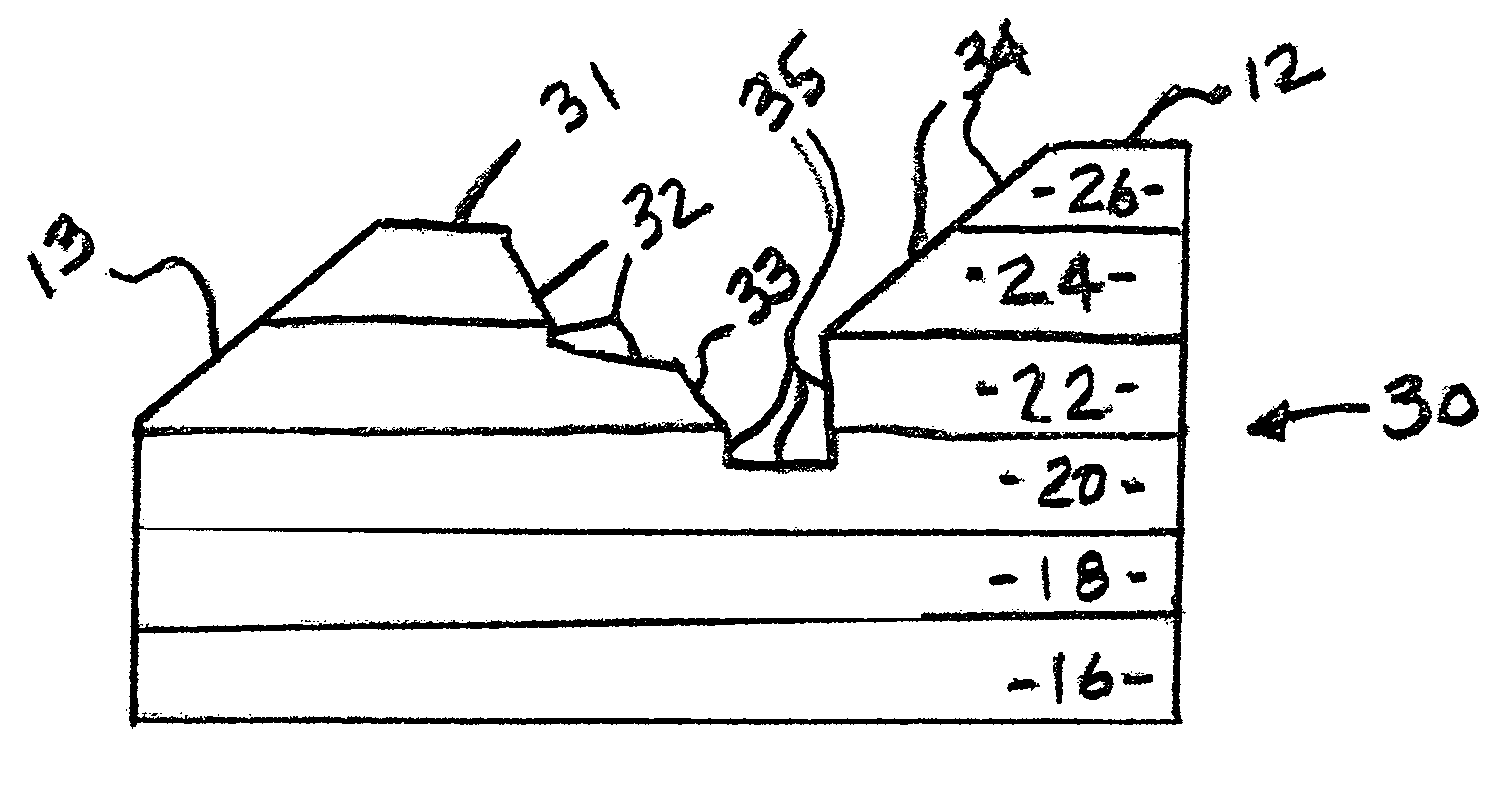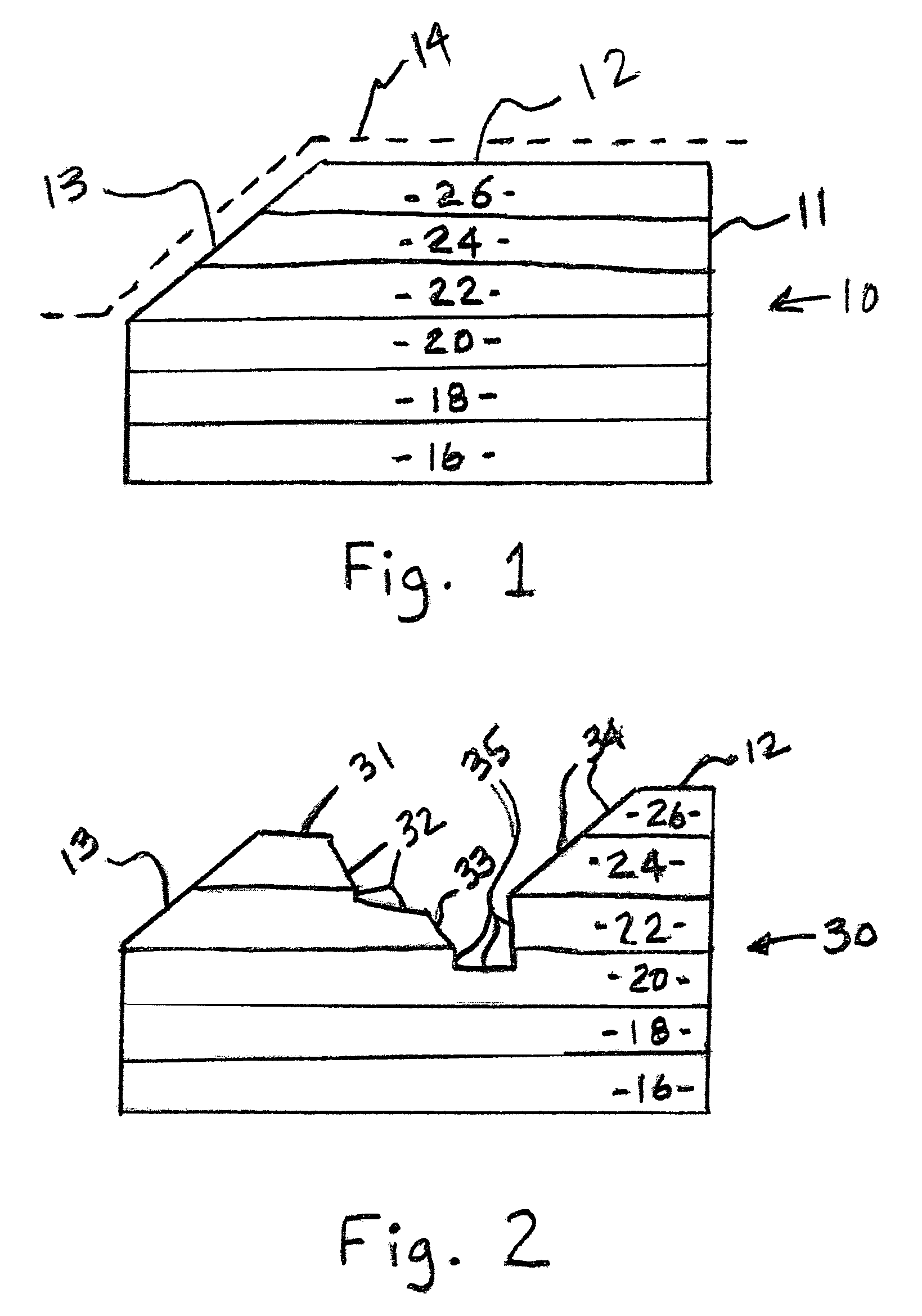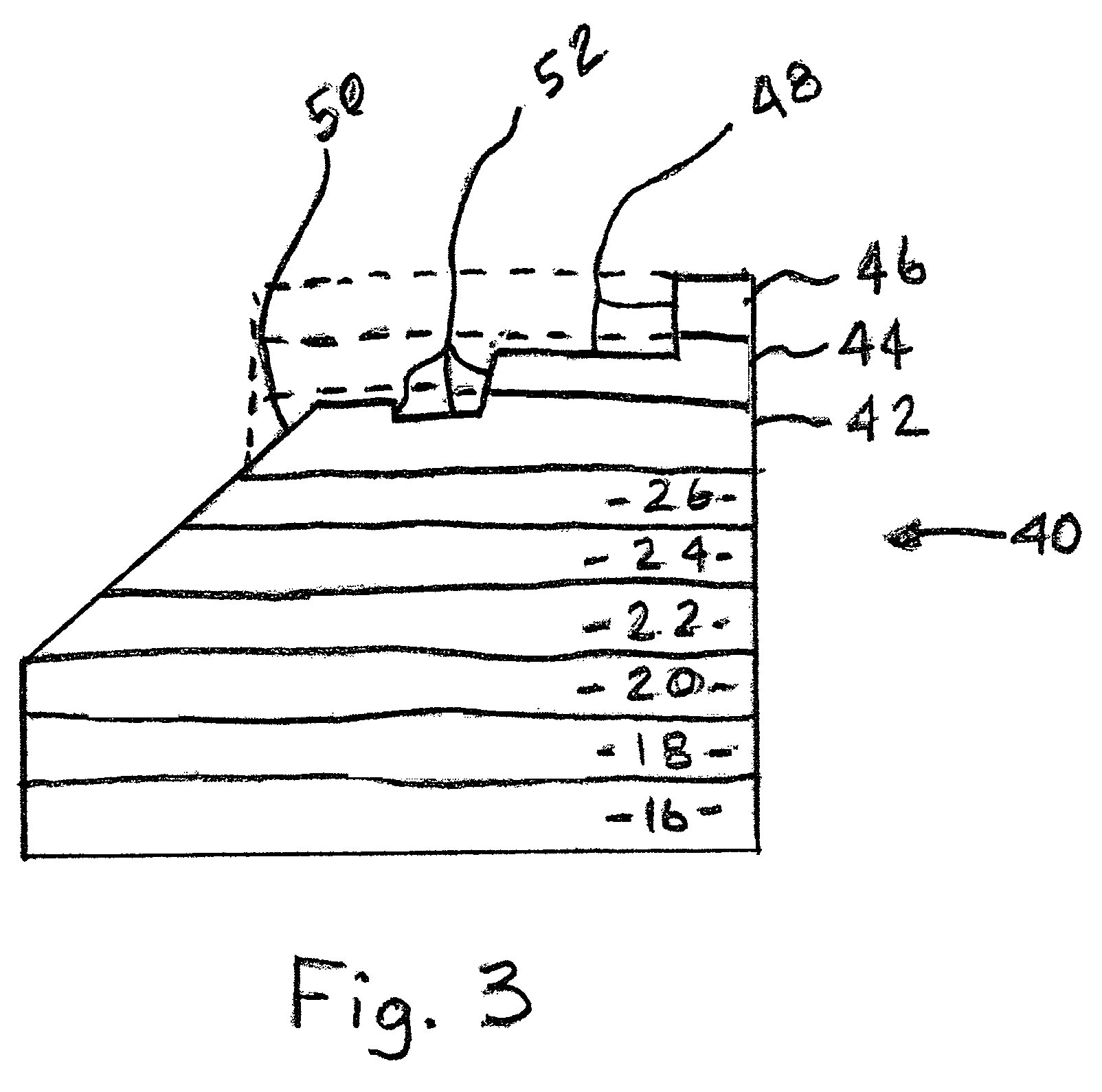Machinable composite mold
a composite material and machine-machine technology, applied in the field of machine-machine-made composite materials, can solve the problems of increasing the cycle time of composite structure molding, heavy and expensive steel alloy molds, and difficult machine or repair
- Summary
- Abstract
- Description
- Claims
- Application Information
AI Technical Summary
Benefits of technology
Problems solved by technology
Method used
Image
Examples
Embodiment Construction
[0019]A portion of an exemplary composite mold in accordance with the present invention is shown diagrammatically at 10 in FIG. 1. The mold is intended for use in fabricating composite parts in accordance with known autoclave curing processes where service temperatures are typically between 350° F. and 500° F. However, if desired, the mold may be used in other molding processes where it is not necessary to heat the material being molded. The mold 10 is designed as a replacement for existing composite molds or tooling that are typically supported by another structure during the molding process. These types of composite molds have been in use for many years to mold a wide variety of composite materials. The molds of the present invention may be used in any situation where such a composite mold is required.
[0020]The mold 10 includes a mold body 11 that has tool surfaces 12 and 13 that are shaped to provide the desired molded surface on the composite structure that is being fabricated. ...
PUM
| Property | Measurement | Unit |
|---|---|---|
| volume percent | aaaaa | aaaaa |
| cure temperatures | aaaaa | aaaaa |
| temperatures | aaaaa | aaaaa |
Abstract
Description
Claims
Application Information
 Login to View More
Login to View More - R&D
- Intellectual Property
- Life Sciences
- Materials
- Tech Scout
- Unparalleled Data Quality
- Higher Quality Content
- 60% Fewer Hallucinations
Browse by: Latest US Patents, China's latest patents, Technical Efficacy Thesaurus, Application Domain, Technology Topic, Popular Technical Reports.
© 2025 PatSnap. All rights reserved.Legal|Privacy policy|Modern Slavery Act Transparency Statement|Sitemap|About US| Contact US: help@patsnap.com



